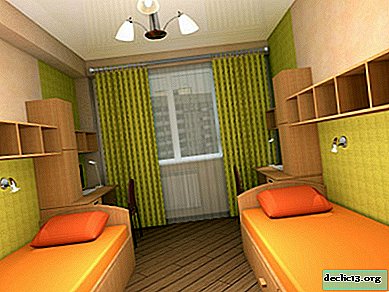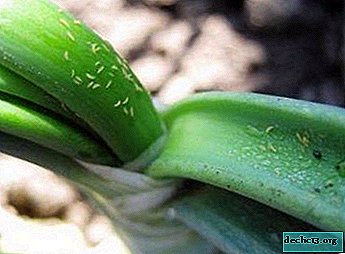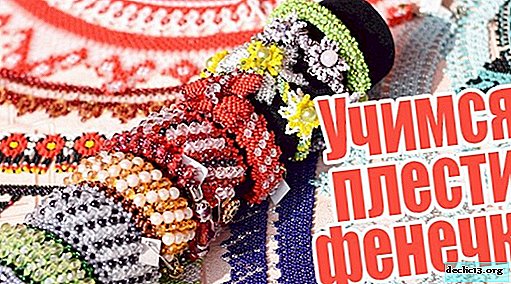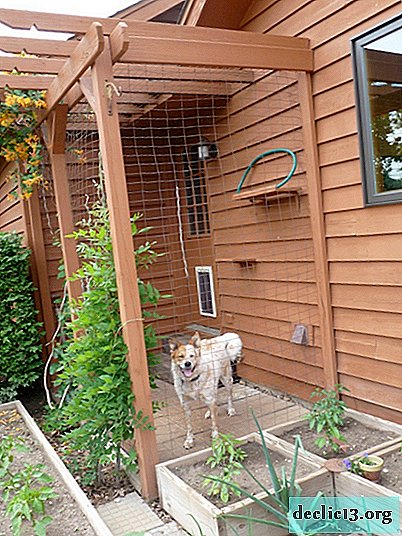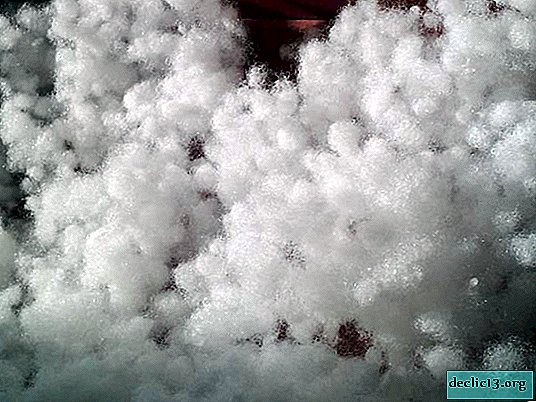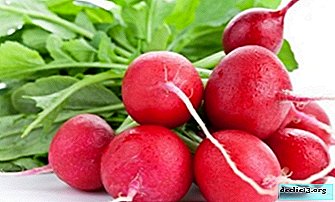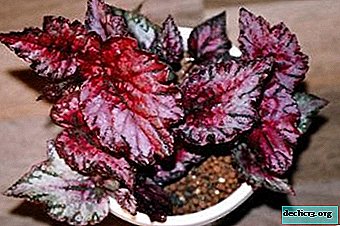Care and growing indoor plants - gloxinia hybrid
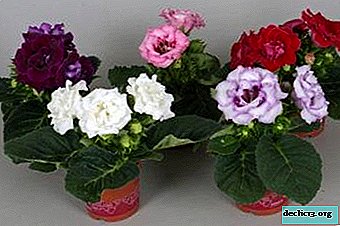
Gloxinia has long been grown as a houseplant. This tropical specimen is very easy to care for, but still requires proper attention.
In order for such a beauty to please the eye for a long time with its abundant and annual flowering, it is necessary to carefully study all the requirements for her care, planting and reproduction.
Below you will see how it looks, get the necessary tips and tricks.
History of occurrence
The plant has two common names - Gloxinia and Sinningnia. In 1785, a plant was found in Brazil - speckled gloxinia. The name was given in honor of the botanist and physician Peter Gloxin. His plant became the first representative of a whole genus.
In 1825, another representative of this plant was found and described, which differed in the structure of the flower and the presence of a tuber. The plant was transported to the botanical garden of London, it was studied by the botanist William Sinning. In honor of him, this representative of the Gesnerieva family was named Sinningnia.
REFERENCE! Later, the name Sinningia was obtained exclusively by the beautiful gloxinia, and all other hybrids remained gloxinia, which in German means bell. But the plant still has two names, one familiar to botany - sinningnia, and the other for gardeners and lovers - gloxinia. Areas of growth in nature - Mexico, Brazil, Andes.Botanical Description
Gloxinia is a perennial plant of the Gesneriaceae family. These are mostly tropical plants. They are shrubs, shrubs and grassy. The root system is scaly, well-branched, in some species the root part is a tuber. The stem is erect, hairless silt.
The leaves of the plant are regular, oval, less often triple, opposite. Leaves can be glossy or slightly terry.. The flowers are single, they come out of the sinuses, bright, large, bell-shaped. Corollas are tubular; they can be white, brown, purple and pink. There are always 4 stamens, but no nectaries. The seeds are small, there are a lot of them.
Kinds
There are three main types of plants, they can include a lot of subspecies and varieties, but an approximate description of their appearance and features will coincide.
Thick-leaved
 Plants have massive stems. Their height reaches no more than 5 centimeters. The leaves are long, up to 19 centimeters. The color of the leaves is bright green, glossy. The leaves are collected in a basal rosette. Corollas have a vertical open wide cylindrical tube. The tube consists of five lobed bends. The color of flowers can be varied.
Plants have massive stems. Their height reaches no more than 5 centimeters. The leaves are long, up to 19 centimeters. The color of the leaves is bright green, glossy. The leaves are collected in a basal rosette. Corollas have a vertical open wide cylindrical tube. The tube consists of five lobed bends. The color of flowers can be varied.
In most varieties, a white border extends along the edges of the bends.. In most cases, a bitmap can be seen in the back of the tube. Tuberous plant, tubers are well stored in the winter both in the native pot and outside. Flowers can propagate by seeds, in this case, flowering occurs no earlier than 8 months after sowing.
Large flowered
 Plants of this group have shortened stems, which in height can reach no more than 2-5 centimeters. Large-flowered gloxinia have a “slender” bush. Since the leaves do not exceed 10 centimeters in length, and there are not many of them. The leaves are regular, glossy. The corolla of the flower has the appearance of a funnel, wide, open. On the corolla there is a six-blade bend up to 12 centimeters in diameter.
Plants of this group have shortened stems, which in height can reach no more than 2-5 centimeters. Large-flowered gloxinia have a “slender” bush. Since the leaves do not exceed 10 centimeters in length, and there are not many of them. The leaves are regular, glossy. The corolla of the flower has the appearance of a funnel, wide, open. On the corolla there is a six-blade bend up to 12 centimeters in diameter.
The flowers of most varieties are wavy along the edge, less often fringed. In this species, perianths are always painted in velvet tones. Tuberous plants, their tubers do not tolerate winter well, require additional processing before and during storage. Well propagated by seeds, after sowing, bloom after 6 months. Large-flowered gloxinia are very finicky in care.
Decorative
 Plant stems can reach up to 7 centimeters in height. Leaves of the correct rounded shape. The leaf length can reach 15 centimeters. Decorative gloxinia leaves are very fragile. The color of the leaves in most varieties is brown. Corollas of flowers have a vertical open cuboid tube. Such flowers can be with six to seven lobed bends. The diameter of the bend can be up to 12 centimeters.
Plant stems can reach up to 7 centimeters in height. Leaves of the correct rounded shape. The leaf length can reach 15 centimeters. Decorative gloxinia leaves are very fragile. The color of the leaves in most varieties is brown. Corollas of flowers have a vertical open cuboid tube. Such flowers can be with six to seven lobed bends. The diameter of the bend can be up to 12 centimeters.
The flowers are large, they seem very massive for a medium-sized bush. The flowers of decorative gloxinia are always brightly colored, rarely their color is monophonic, often tiger, spotted, striped, gradient with a fringing.
TIP! The plant is tuberous; its tubers hibernate well, in a native pot or in a sandy substrate.How many hybrids are there?
Gloxinia hybrids include more than 25 species. Plant varieties cannot be counted, as breeders are constantly breeding new varieties. The most famous of them:
- Yesenia variety;
- Bohemia variety;
- Kaiser Wilhelm variety;
- Jasmine variety;
- group of varieties of Tidea;
- variety Random meeting;
- Wuthering Heights variety;
- Tigrina variety
- grade Blue Pearl;
- Party Dude variety;
- Ozark Pink Popcorn
- Sinningia leucotricha variety.
Rules and Landing Tips
For the normal growth and development of a plant, it is necessary to take into account the peculiarities of its content - a convenient place, lighting, humidity and air temperature, the right pot and soil.
Lighting and location
 At home, gloxinia grows well at a person’s usual room temperature. It does not tolerate heat, do not put a flower in a room where the temperature can reach + 28C. During the period of active growth and flowering, the air temperature should not be higher than + 22-24 ° C and not lower than + 16 ° C. Winter minimum for normal storage of tubers + 10-14C.
At home, gloxinia grows well at a person’s usual room temperature. It does not tolerate heat, do not put a flower in a room where the temperature can reach + 28C. During the period of active growth and flowering, the air temperature should not be higher than + 22-24 ° C and not lower than + 16 ° C. Winter minimum for normal storage of tubers + 10-14C.
A place for the full development of gloxinia is to choose a well-lit, and also it is worth providing the plant with illumination. The best options for placing a pot with gloxinia will be - windowsill, glazed balcony. Ideally, if the glass near the plant will open, but they should also protect the flower from the wind.
Gloxinia loves moderate air humidity, if it is not possible to equip a room with a humidifier, you can periodically ventilate the room and moisten the air by spraying water from a spray bottle.
Soil requirements
To plant gloxinia, the following soil composition will be required:
- 2 parts of leafy soil;
- 1 part of peat or greenhouse land;
- 1 part of river sand.
The soil must be of low acidity and breathable.. To do this, it needs to be well plowed up. Also, it is mandatory to disinfect the soil. For this, a solution of the special tool "Maxim" is suitable, for 2 liters of water 1 ampoule of the drug. Before disembarking, a good drain must be placed on the bottom of the pot. The gloxinia pot is worth buying a shallow but wide one. Since the root system of the plant is superficial and does not require strong penetration.
IMPORTANT! For the full development of the root system, a distance of 4-5 centimeters is required between the tuber and the vessel wall.How to care?
Gloxinia has a number of features that are important in caring for it:
- After the flowering period, the ground part of the plant dies, you need to wait until this process is completely completed on its own.
- When the ground part died, the plant leaves for a dormant period, at which point it requires fertilizing with potassium monophosphate. When switching to a dormant period, nitrogen fertilizers cannot be introduced into a pot with a plant.
- Gloxinia, without fail, must receive light heat 14 hours a day, this can be achieved by additional lighting with special lamps.
Watering
 Watering gloxinia during the growing season is plentiful. Water should be soft, settled and 2-3C warmer than room temperature. Gloxinia can be watered in the pan or along the edge of the pot. If watering is carried out through a pan, then after 20-30 minutes, the remaining water in it must be eliminated.
Watering gloxinia during the growing season is plentiful. Water should be soft, settled and 2-3C warmer than room temperature. Gloxinia can be watered in the pan or along the edge of the pot. If watering is carried out through a pan, then after 20-30 minutes, the remaining water in it must be eliminated.
In the summer dry season, watering is carried out up to 3 times a week. In the cold season, this process needs to be reduced to 2-3 times a month, as the soil dries. During the rest period, watering should be minimized, but also not to allow drying of the soil.
Common Diseases and Pests
Gloxinia is susceptible to the development of such diseases:
- leaves turn yellow - due to low humidity and lack of sun;
- brown spots on the leaves - arise due to the use of cold water for irrigation;
- leaves are pale and flowering is absent - due to poor lighting and lack of plant nutrition.
Pests That Affect Gloxinia:
- spider mite - drags on the terrestrial part of gloxinia with a whitish spider web, immediate treatment of the plant with acaricides is required to combat
- thrips and aphids - small pests, attack plants by colonies and it completely dies, at their first manifestations urgent treatment with insecticides is needed.
Propagation Features
The reproduction of gloxinia is possible in three ways.
Seeds
From November to February, you need to sow the seeds in a mixture of sheet soil, peat and sand in a ratio of 1: 1.
- Do not deepen the seeds, but lightly sprinkle with earth.
- Put the container with seeds in a bright and warm place, periodically spray the soil with warm water.
- If necessary, cover the crops with film and periodically ventilate.
- Sprouts appear after 14-20 days. Sprouts with 2-3 leaves can already be transplanted into a native pot.
Cuttings
- A leaf with a small petiole 1-1.5 centimeters is cut from the plant.
- In a mixture of peat and sand (1: 1), the petiole is rooted and covered to create a greenhouse effect.
- Ventilate seedlings 1 time per day.
- After 3 weeks, young tubers form, then the plant can be opened and transplanted if necessary.
Next, you can see how this process occurs.:
Tuber division
- A large healthy tuber is cleaned of soil residues and is divided into parts with a sharp knife.
- Each part must have an escape.
- Places of cuts are dried with wood ash.
- Each piece is planted in a pot, like a full-fledged tuber. The first 3 days do not water.
There is no florist who has not encountered such a plant as gloxinia. She has long conquered hearts with her beauty. All the described requirements for caring for her are not complicated, so you can safely acquire such a beauty at home.

